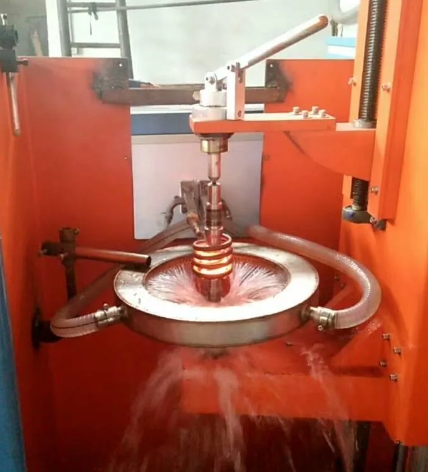- 03
- Nov
Jakie czynniki należy wziąć pod uwagę przy dostosowywaniu sprzętu do hartowania indukcyjnego?
Jakie czynniki należy wziąć pod uwagę podczas dostosowywania sprzęt do hartowania indukcyjnego?
1. Kształt i rozmiar przedmiotu obrabianego
W przypadku dużych przedmiotów obrabianych, prętów i materiałów stałych należy stosować urządzenia do nagrzewania indukcyjnego o dużej mocy względnej i niskiej częstotliwości; w przypadku małych przedmiotów obrabianych, rur, płyt, kół zębatych itp. należy stosować sprzęt do hartowania o wysokiej częstotliwości o małej mocy względnej.
2. Głębokość i powierzchnia przedmiotu obrabianego wymagana do podgrzania
If the heating depth is deep, the area is large, and the whole is heated, induction heating equipment with high power and low frequency should be selected; if the heating depth is shallow, the area is small, and part of the heating is heated, high-frequency quenching equipment with relatively low power should be selected.
3. The heating speed required for the workpiece
Wymagana prędkość nagrzewania jest duża i należy wybrać sprzęt do nagrzewania indukcyjnego o stosunkowo dużej mocy i stosunkowo wysokiej częstotliwości.
4. Ciągły czas pracy sprzętu
Continue the task for a long time, and relatively choose induction heating equipment with slightly higher power.
5. Interwał połączenia między elementami wykrywającymi a sprzętem
The connection is long, and even requires the use of water-cooled cables for connection, and induction heating equipment with relatively high power should be selected.
6. Wymagania dotyczące procesu obrabianego
For quenching, welding and other processes, the power of the quenching machine tool is relatively small, and the frequency is higher. For processes such as annealing and tempering, the power of the quenching machine tool is larger and the frequency is lower. Red punching, hot forging, melting, etc., need to be thoroughly For a process with good thermal results, the power of the quenching machine tool should be larger and the frequency should be lower.
7. Information of the workpiece
Among the metal materials, the higher the melting point, the higher the power, the lower the melting point, the lower the power, the lower the resistivity, and the lower the power.

